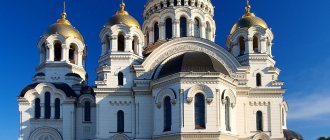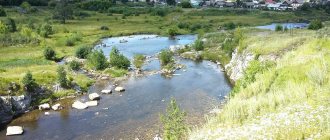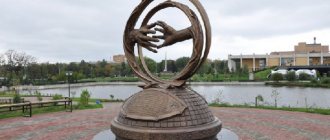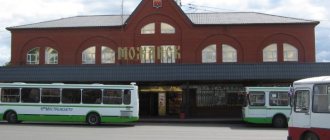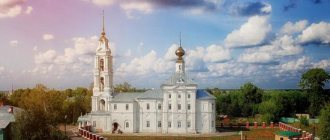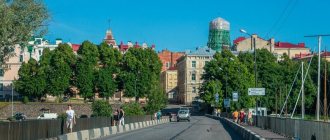Lost in the far corner of the Kostroma region, the town of Soligalich rarely comes under the radar of travelers, even those specializing in trips to small towns in Russia. However, Soligalich is quite a remarkable place. In the context of urbanization, there are not many cities left in Russia whose appearance has not changed at all over the past 100-plus years. It is precisely such places that Soligalich belongs to, where you can see the Russia as it was back in tsarist times. There are practically no buildings of the 20th century in the city, and forests and swamps immediately begin outside the center.
How to get there
Getting to this remote corner of the Kostroma region is not so easy. Despite the fact that there is a railway station in Soligalich, it is not possible to get to the city by train, since passenger traffic on the Monzen Railway on the Lamsa-Soligalich section has long been canceled. Typically, travelers get here on their own by car, or combine rail and bus transport.
To get to Soligalich by car from Moscow , you need to move along the Yaroslavskoye Highway and its continuation in the form of the M8 "Kholmogory" highway to Yaroslavl, then along the Kostromskoye Highway to Kostroma, and then along the P-243 highway to Sudislavl. The P100 highway “Sudislavl - Soligalich” originates in this city, along which you can get to your destination. The distance between the two cities is 170 km.
4 buses leave from Kostroma to Soligalich daily. The flight starts at 10:00, the last flight is at 19:30. Travel time is about 5 hours. You can take the same bus not only in Kostroma, but also, for example, in Galich, which will reduce the time spent on the bus to just over 2 hours. You can get to Galich itself by train, since there is a railway station on the northern route of the Trans-Siberian Railway.
Geography and population
Soligalich is located in the very north of the Kostroma region, 46 km from the town of Chukhloma and 100 km from the larger Galich. The distance to the regional center is more than 215 km. The town is located on the Galich Upland - a spur of the Northern ridges, which are the natural border of the Volga and Northern Dvina basins. By all standards, Soligalich belongs to the Russian North: the city is surrounded by dense impenetrable forests, and its surroundings are frightening in their desolation.
The location of Soligalich is also reflected in the fact that it is considered the northernmost city of the Central Federal District.
Soligalich is a tiny town in size even by the standards of the Russian North. The population of Soligalich is just under 6 thousand people and has a further downward trend.
Camping
Nature of Soligalich
If Soligalich itself is a reserve of carved wooden houses and ancient temples, then the attractions of its surroundings are associated with the natural features of the region.
Directly adjacent to Soligalich is the picturesque forest park “Sidorikha and Katkovo” (exit from the city to the village of Zashugomye), it is located at the mouth of the Svyatitsa River, which flows into the Kostroma River. The diversity of flora and the beauty of the landscape attract ecotourism lovers here.
Climate and weather
Like most cities in the central part of the European territory of the Russian Federation, the climate in Soligalich belongs to the continental climate of temperate latitudes. The northern location of the city makes the local climate moderately cold - the average annual temperature is +2.8 °C, the warmest month is July with an average temperature of 17.5 °C, the coldest month is January with an average temperature of -12.6 °C. The amount of precipitation throughout the year is distributed evenly and is quite large, so the processes of moistening prevail over the processes of evaporation. The consequence of this is impenetrable forests and swampy soil in the vicinity of the city.
Where to stay and eat delicious food
In a town of 6,000 people, unaccustomed to the influx of tourists, it is not easy to find a place to stay for the night. The main city hotel "Soligalich" is temporarily closed, so you can't rely on it. Another potential place for accommodation is the sanatorium named after. Borodin, one of the oldest in Russia. The sanatorium has been operating since the mid-19th century and specializes in the treatment of the musculoskeletal system. However, an ordinary tourist without a sanatorium-resort card will not be allowed there. So almost the only available option for a visitor is the guest house of V. S. Rostetskaya. The IP Rostetskaya hotel is located in the very heart of the city on the Embankment of the Kostroma River, 26. The small hotel offers 5 economy class rooms. The price range is from 400 RUB to 750 RUB per room per night. Each room has free Wi-Fi.
The choice of cafes and restaurants is also not great, and the lack of such places means that cafes are often closed for special services. Therefore, it is better to take care of the place for dinner in advance by booking a table in the afternoon.
As usual, the best place to have a meal is a restaurant with a name similar to the name of the city. Cafe-restaurant "Soligalich" is located at st. Lenina, 2. The good quality of the dishes is in pleasant harmony with the “ridiculous” prices. For example, a full lunch can cost about 200 RUB. Opening hours: 12:00 – 01:00.
An alternative to Soligalich is the Titanic cafe, the advantages of which are exactly the same. Titanic's address is st. Komsomolskaya, 3, the cafe is open from 12:00 to 02:00. And finally, the last option is the Teremok cafe, located at st. Kommunisticheskaya, 7.
Soligalich
Historical reference
One of the cities of the Kostroma region, its emergence is associated with the founding in 1335 of the Resurrection Monastery that still exists today, although the salt trade, to which the city owes its name, as well as the settlement itself, arose earlier.
During the 14th-17th centuries. Soligalich remained a major salt production center. Soligalich, one of the oldest cities in the Kostroma region, owes its name and origin to the salt industry, salt pans, which were first mentioned in 1332. The settlement itself arose earlier. It was he who was mentioned in his spiritual testament by Ivan Kalita.
According to legend, the emergence of the city was closely connected with the founding of the Resurrection Monastery on this site. In 1335, after Easter, the Galich prince Fyodor Simeonovich saw the light from the north.
The vision was soon repeated in the form of a pillar of fire. The prince got ready to set off, reached the Kostroma River, but got lost. A hermit monk who happened to meet the prince showed him the place of the sign, during the search for which the prince saw a white doe. He took this as a sign from above and built a temple on this site, and in 1341 he became a monk in the Resurrection Monastery that he built. The salt pans and the monastery united and gave the name to the settlement that arose here - Salt. But in order to distinguish them from other places where salt had also been mined for a long time, the settlement began to be called Galich Salts. The city's coat of arms, received in 1779, depicts three stacks of salt on a golden field.
Soligalich, like neighboring Chukhloma and the capital Galich, from its very inception defended itself from the Vetluga and Vyatka Cheremis, who considered these lands their own. In the middle of the 14th century. Cheremis prince Nikita Bayboroda repeatedly attacked Soligalich, robbed and destroyed it, but did not achieve success. In the 15th century As a result of the war between Moscow and the Galich principality, which included the Soligalich settlement, it lost its independence and became part of the Muscovite kingdom. The Moscow Grand Dukes paid special attention to it, mentioning it in their wills - salt was precious in Rus'. The Muscovite kingdom was supported by Metropolitan Jonah of Moscow and All Rus', elected in 1437, a native of the Soligalich village of Odnousheva. He was a monk of the Resurrection Monastery, he fiercely denounced the Galich prince Dmitry Shemyaka and spoke out against the Vyatichi.
At this time (according to another version at the beginning of the 16th century), a defensive fortress was erected in Soligalich, on the banks of the Kostroma River, the remains of which can still be seen today. She successfully defended the population of Soligalich, which was not spared by the raids of the Kazan Tatars; the city and population suffered especially badly from them in the 16th century. The preparations were not in vain, since in 1532, during the great invasion of the Kazan Tatars, the fortress was subjected to a three-day siege, but it held out and the Tatar army retreated. The image of the Soligalich Kremlin was repeatedly found on icons and icon frames in honor of Macarius of Unzhensky, the legendary defender of the city in 1532. In memory of those ancient events, the Soligalich Museum still houses a large iron cauldron, in which, according to legend, resin was boiled and poured with the fortress walls of the attacking enemies.
Under the protection of the fortress, the urban settlement developed and the number of wells and salt pans, which stood in several rows, grew. The Moscow Simonov and Trinity-Sergius monasteries, Moscow princes and enterprising people had their own varnitsa and villages in the area. White stone begins to be mined here, and Soligalich becomes famous for its quarries. Limestone deposits were located in close proximity to the city along the banks of tributaries of the Kostroma River. It was already at the beginning of the 16th century. learned to open-pit mine and burn it into lime, which was in special demand throughout the Russian North. Caravans with salt and lime went to Kostroma and Nizhny Novgorod, Yaroslavl and Yuryevets. Soligalich found itself on one of the important trade routes connecting the Volga with Arkhangelsk. The city developed quickly and became surrounded by settlements. Even the Polish-Lithuanian invasion and the devastation of the city by the troops of Pan Lisovsky, who burned the Soligalich fortress in 1609, did not lead the city to desolation. In 1614 there were 10 wooden churches, 7 streets and several settlements: the Simonov Monastery settlement, Bozhedomka with a cemetery, Kamenshchikova, Yamskaya and Streletskaya. The 50 burned courtyards and shops were quickly rebuilt, and in 1620 a new wooden fortress was built. The 17th century was a century of prosperity for the city, whose prosperity consisted of salt and lime. In good years, up to 80 thousand tons of salt were mined here.
Limestone gradually began to be used for the construction of stone buildings. In 1607, the Intercession Cathedral of the Chukhloma Avraamiev Monastery began to be built from Soligalich white stone, and in 1645 it was used for special stone carvings in the Church of the Resurrection on Debra in Kostroma. In Soligalich itself in the 17th century. Several amazing temples were built, which still adorn the city today.
Since 1708, Soligalich was considered a suburb of the Arkhangelsk city province. In 1778, as a district town, it became part of the Kostroma governorate, and in 1796 - the province. In the 18th century, salt production in Soligalich gradually declined, but limestone mining, which continues here today, increased. Tar and blacksmithing industries and logging are developing. Timber was cheap here, and Soligalich remained predominantly wooden. It burned down more than once, and especially badly in 1752, when all the residential buildings, salt factories with all supplies, shops with goods and the magistrate with all their affairs burned down, and the parish churches burned down. The city had not yet been rebuilt when a new fire in 1808 destroyed more than 400 houses.
After this last fire, the salt wells were filled up, and in 1821 the government gave the plot of land where the salt springs were located to the Makaryev merchants Kokorev to resume salt production. When they drilled an artesian well, they discovered a mineral spring that local residents used to treat illnesses. In 1841, Soligalich merchant V.A. Kokorev opened a hydropathic clinic here. In 1858, at the request of V.A. Kokorev, Doctor of Medical Sciences A.P. Borodin arrived here, who later became a famous chemist and an even more famous composer. A P Borodin explored the source, established the healing properties of the water, and on his advice the water and mud baths were expanded. At the end of the 19th century. Kokorev donated the land with springs to the city, after which the zemstvo built several new buildings here. Sanatorium named after A.P. Borodino still exists in the city today.
Soligalich was surrounded by a ring of noble estates, most of which were wooden. One of the largest and most interesting estate complexes that has survived to this day in the Kostroma region is the Neronovo Cherevin estate. It is associated with the names of the Decembrist P.D. Cherevin (1800-1824); adjutant general, head of the personal guard of Alexander III P.A. Cherevin (1833-1896) and other famous representatives of this ancient noble family, as well as a talented portrait artist of the late 18th century. Grigory Ostrovsky, whose works under the name “Soligalich finds” became widely known only in the 1970s. Not far from the city was the Drakino estate, where the famous Russian navigator and explorer of the Far East G.I. was born. Nevelskaya, - a memorial sign was installed on the site of the estate. Among the names that Soligalich is especially proud of is the wonderful Russian singer P.A. Bartenev, Russian engraver L.A. Seryakov, book publisher I.D. Sytin, Decembrists S.P. and I.P. Shipovs and N.P. Okulov, writer P.P. Sukhonin (Shadrina), famous Russian architect I.O. Michurin, writer N.P. Makarova.
Remote from railways and without waterways, Soligalich at the beginning of the 20th century. was a quiet county town, whose life came to life with the opening of the holiday season. In 1919, the sanatorium was closed, but already in 1925 it opened again in order to steadily develop in subsequent years. At the end of the 1940s. it was significantly reconstructed, and the reconstruction in 1970 made it possible to transfer the sanatorium to year-round operation. He specializes in the treatment of patients with diseases of the musculoskeletal system, peripheral nervous system and gynecological diseases.
Currently, the city of Soligalich is the center of the Soligalich municipal district of the Kostroma region with a population of 6.3 thousand people. Soligalich has a well-preserved regular planning structure, outstanding architectural monuments, and massive historical buildings, which makes it possible to classify it as one of the most valuable monuments of urban planning art.
All city attractions
By the will of history, Soligalich has undergone virtually no changes over the past 100 years. All the city's attractions date back to the pre-revolutionary period. At the same time, up to 90% of the buildings in Soligalich are wooden houses, and only temples and individual civil buildings are built in stone.
Monument to M. Yu. Lermontov
The first thing that will greet a tourist who arrives in the city by bus is the monument to Lermontov. The monument is located directly opposite the city bus station on Kostromskaya Street. The statue was installed in the 50s of the 20th century according to the design of the sculptor B. A. Zotov. The poet himself had never been to the provincial town, but Soligalich and Lermontov still had a connection. The poet’s paternal relatives lived in the city for a long time.
Museum of Local Lore
Almost any small town can boast that some outstanding person was born and raised in it. The name of the famous admiral and explorer G.I. Nevelsky, who discovered the Tatar Strait between Sakhalin and the continent, annexed the mouth of the Amur to Russia and founded the city of Nikolaevsk-on-Amur, is associated with Soligalich. The memory of the outstanding fellow countryman is captured in the Soligalich local history museum, which bears the name of Nevelskoy. The museum is located in the very center of the city at st. Sovetskaya, 2. The museum has several permanent exhibitions: “Soligalich Icon”, “Western European Painting”, “Portrait Gallery of the Cherevin Nobles” and, of course, an exhibition dedicated to Nevelsky. The permanent “guests” of the museum are the exhibitions of the “Kostroma Historical, Architectural and Art Museum-Reserve,” of which the Soligalich Museum is a branch. Ticket price is 155 RUB.
Church of St. Nicholas the Wonderworker
Most of the churches in Soligalich are in need of restoration, but some of them were literally turned into ruins during Soviet times. These include the church on Navolok, located at st. Ostrovsky, 7 near the bridge over the Kostroma River. The temple was erected at the end of the 17th century in the Russian pattern style. In the 30s of the 20th century, the crowning of the temple was destroyed, and the bell tower collapsed in the 80s. Now all that remains of the temple is the foundation. However, despite the destruction, the church was returned to the Russian Orthodox Church and is now a functioning temple.
Monument to V. A. Vyluzgin
Installed in the center of the local Red Square opposite the Soligalich Local History Museum. This monument is a tribute to the turbulent years of the revolution, which did not spare Soligalich. Vasily Vyluzgin is the first chairman of the local Council, who died during the rebellion of local residents against Soviet power in 1918. Subsequently, the memory of the revolutionary was immortalized in a plaster monument.
Old and New shopping arcades
The Red Square of Soligalich is framed by two buildings of shopping arcades bearing simple names: And if the New shopping arcades are a late stylization on the site of the demolished original building, then the Old ones are unique in their own way. In the first half the 19th century, shopping arcades were built throughout Russia, but only in Soligalich were they built of wood . This unique monument of wooden classicism is in a depressing condition, but this gives it a touching appearance. At the moment, a large-scale reconstruction of the Old Trading Rows is planned.
Monzen Railway
Departmental railway located on the territory of the Kostroma and Vologda regions. The Lamsa – Soligalich section belongs to the local lime plant. It was once used for passenger traffic, so a wooden station building was built here. However, now only departmental freight trains move along the railway tracks. The station itself is currently abandoned and is not even depicted on maps. For lovers of this kind of architecture, you can name the approximate location of the building: you need to move to the north of the city to the lime plant and to the place where the railway tracks begin.
Nevelskoy Monument
The memory of the famous native of these places, Nevelsky, is captured not only in the local history museum, but also in the monument to the researcher. The obelisk was installed at the address: st. Vyluzgina, 25. The bust with a pedestal was installed to celebrate the 150th anniversary of the navigator’s birth in 1964.
House of Merchants Shalaevs
A striking example of wooden architecture, which Soligalich is so rich in. First of all, the house is distinguished by fine, elaborate carvings throughout the entire façade. The exact address of the house is st. Gagarina, 5.
Resurrection Monastery
The monastery was founded back in 1335, and the date of the founding of the monastery is also considered the date of the founding of the city itself. Despite its antiquity, during Soviet times the monastery’s buildings fell into disrepair, so now only two churches have survived from them: the Resurrection Cathedral and the Church of the Epiphany (both from the end of the 17th century). You can find picturesque ruins at the intersection of the Kostroma River Embankment and Boulevard Street.
Michurin Estate
One of the many objects of wooden architecture in Soligalich. The building was erected at the beginning of the 19th century and is an example of wooden provincial classicism. The estate, decorated with balusters, is located at the address: st. Kommunisticheskaya, 21.
House of merchant Zavyalov
The house, built in the mid-19th century, was subsequently used as a meeting of the nobility. Adjacent to Zavyalov’s house is a tavern, which also belonged to a famous Soligalich merchant. Now the stone building is occupied by the city administration. The exact address is st. Karl Liebknecht, no. 2.
Church of the Transfiguration
It was erected in 1821 and belongs to the then dominant style of classicism. The Church of the Transfiguration was once part of a single complex with the Church of St. Nicholas the Wonderworker on Navolok, but it has been preserved much better than the latter and is an active cathedral. The address of the temple is st. Ostrovsky, 6.
Cathedral of the Nativity
Perhaps the most striking example of local architecture was erected at the very end of the 17th century as the main church of the Nativity Convent. In the second half of the 18th century, the monastery was abolished, and the Nativity Cathedral was rebuilt in the regional Ustyug Baroque style. The cathedral is located at: st. Vyluzgina, 1B.
Old Cathedral Assumption Church
It was built in 1778 with donations from parishioners and was located on the territory of the Old Settlement of Soligalich. This was the only Soligalich temple standing on the left bank of the Kostroma River. In the 30s, the temple was destroyed and now only ruins remain. The address of the temple is st. Embankment, 41.
Salt well
Located on the territory of the oldest sanatorium in Russia named after A.P. Borodin. The wooden structure is a cultural heritage site and was erected at the end of the 19th century. The address of the monument is st. Valovaya, 7.
Epiphany Church
The church was part of the abolished Resurrection Monastery and was used as a winter church. The temple was built at the end of the 17th century. Now the temple is not used for its intended purpose, but the building is maintained in satisfactory condition by the efforts of the local administration. The temple is located at the intersection of Boulevard Street and the Embankment of the Kostroma River.
Usolskaya Siege
The old settlement is a local Kremlin, the buildings of which have not survived to this day. The fortress was founded at the end of the 15th century after the annexation of the city to the Grand Duchy of Moscow. The Kremlin was an earthen rampart on which there was an 8-meter wooden wall and 2 towers. Just a few decades later, the fortress withstood a 3-day siege by the Kazan Tatars . The wooden buildings of the fortress have not survived to this day, so all that remains of it is a high earthen rampart. However, the fort is ideal as a place for walking. The exact address of the historical monument is the right bank of the Kostroma River, st. Embankment, 43.
Church of the Exaltation of the Cross
It was erected at the beginning of the 19th century in the classicism style in the very center of Red Square in Soligalich. Its construction began after the fire of 1808, when the temple that stood on this site was destroyed in the fire. During Soviet times, the temple was turned into a cinema, the bell tower and the completion were demolished. In post-Soviet times, the cinema was closed, and a shooting gallery and a store were located in the building of the former temple.
Church of the Entrance to Jerusalem
The Church of the Entry of the Lord into Jerusalem belongs to many ruined temples of Soligalich. Built at the very beginning of the 19th century, the church was closed in the 30s of the 20th century and is not used in any way today. The spire and the top of the cathedral are broken, but otherwise the ruins are maintained in good condition, so the architectural monument can be visited. Temple address: st. Karl Liebknecht, no. 8.
Church of St. Nicholas the Wonderworker
The Church of St. Nicholas the Wonderworker at the Soligalich prison castle was founded at the very end of the 19th century. Like many other churches in the city, after the revolution its completion was demolished, and the building itself was adapted for economic needs. The former temple is still in the same condition today. Church address: st. Vyluzgina, 54.
Now it’s hard to believe that Soligalich was once one of the first resorts in Russia. The reason for this was, among other things, the mineral water springs located in the vicinity of the city. One of them is still in operation and is located near the city. To get absolutely free mineral water, you need to move in a north-eastern direction towards the exit from the city along the road to the village of Zashugomye. The source is located in the forest immediately behind the Sidorikha stadium.
Church of Peter and Paul
Another of the Sogalich churches is the Church of Peter and Paul, built at the beginning of the 19th century. The church retained its purpose even in Soviet times, largely because it had the status of a temple at the city cemetery. You can find the Peter and Paul Church in the southwest of the city in the cemetery. Exact address: st. Kalinina, 18A.
Of course, Soligalich cannot compete in its attractions with the most popular small towns in Russia, such as Suzdal or Rostov Veliky. However, the charm of the Russian North, manifested in its architectural monuments, will not leave indifferent the traveler who decides to come to Soligalich.
Vozdvizhenskaya Church
Church of the Exaltation of the Holy Cross (pictured at the beginning of the 20th century)
By 1809, parishioners, merchants and other philanthropists had collected funds for the construction of a stone church. A design for the future structure was ordered in Kostroma. The tented bell tower of the late 17th century, which miraculously survived from the previous church, was decided to be preserved. In 1816, the consecration of the church in the name of the Exaltation of the Holy Cross took place. It was the largest temple in the city, built in the style of provincial classicism. The temple consisted of two quadrangles decreasing towards the top (with the upper quadrangle being slightly rounded), on which stood four small thin domes with crosses. The fifth dome rested on a central drum, also elongated. Six-column porticoes and a large refectory were added to the temple from the south and north. There was a bell tower nearby. In Soviet times, the church building was rebuilt as a cinema: the domes with crosses were broken, the upper quadrangle with the dome, the porch and the hipped bell tower were demolished. Today the building is used for the needs of the city.

